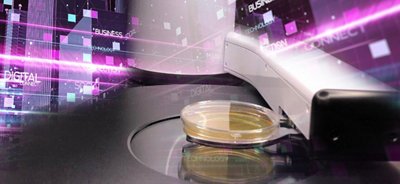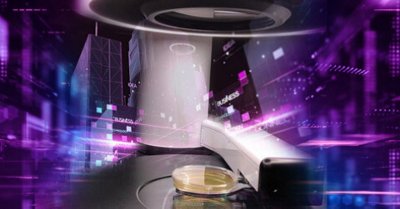EM Data Quality Management

July 07, 2022
HOW TO SAFEGUARD DATA QUALITY MANAGEMENT?
Drug developers rely on data quality management (DQM) during development and manufacturing for a number of reasons and, therefore, must start with a clear data management strategy in order to organize and protect the integrity of the products, along with the safety and well-being of patients. A successful data management strategy starts with utilizing fully-digitalized and automated microbiological environmental monitoring systems and applications
Considering the time and investment drug developers put in, much is on the line. The process of drug approval — from initial testing to patient treatment — takes about 12 to 15 years, according to the Pharmaceutical Research and Manufacturers of America, and only 1 out of every 5,000 drug candidates actually gets cleared to launch a commercial product. Meanwhile, The Journal of the American Medical Association (JAM) reports drug development cost is estimated to range between $314 million and $2.8 billion.
With so much at stake, one method pharmaceutical developers can use to ensure quality control of data management is adopting accurate and streamlined microbiology testing.
With so much at stake, the digitalization of the microbiological testing by pharmaceutical developers will ensure quality control of data management allowing to create a framework to streamline the process and increasing the accuracy of data.
WHAT IS DATA QUALITY MANAGEMENT?
Across most business entities, data quality management defines the set of rules and practices used by an organization (right people, process and technologies) to handle records and maintain accurate rich data. It details how data gets acquired, stored, implemented, distributed and analyzed, in order to help a business to measure data quality, compare data, define metrics, perform data analytics and find and solve errors to reach its end goal.
For drug developers, data quality management narrows the collection to only the information pertinent to assess the safety and effectiveness of the experimental therapy, as well as how to ensure the quality and integrity of that information, while controlling costs and reducing the time consumed by the clinical trial process.
HOW TO USE QUALITY METRICS TO MAINTAIN EFFICIENCY ?
Implementing data management protocols leads to enhance manufacturing efficiency. The drug industry, in particular, uses quality metrics to monitor quality control systems and processes. Modern manufacturing includes robust quality metrics programs as a foundation for continual improvement of product and process quality at different dimensions.
The key to implementing successful data operations is building a robust data pipeline that analyzes and provides feedback. Enabling and expediting value measurement calls for seamless integration (across technologies, inter-agency teams and partners), scalability and agility (via customizable data sources) and simplification and standardization (using data management templates to measure KPIs and Critical quality attributes).
Without a specified system of data quality management, a pharmaceutical lab team may end up using inconsistent versions of the same reference data or creating duplicate studies across different platforms. This is a huge time waste when it comes to harmonizing, mapping and stitching this data together, and prevent to perform accurate data analytics.
HOW TO AUTOMATE DATA QUALITY METRICS?
Automation of data quality management offers operational efficiency that is vital for pharma lab production. Automated protocols assist labs with meeting regulatory compliance for reporting leading up to market, then later, mastering GDPR guidelines once the drug is on the market. This automation also reduces the risk of patients receiving tainted medication and offers protection to both sponsor pharmaceutical companies and any CMO partners.
Automated tools include cloud-based data platforms, machine learning, AR/VR, AI and additive manufacturing. They all help ease the research and development process for pharma companies and provide a fully traceable supply chain to allow companies to identify every component’s origin based in specific attributes and synthetic pathway in every batch of material in their facilities.
Today’s top pharma producers use innovative quality control methods that include rapid and automated microbiology methods that brings a lot of value at different levels of the company. There’s a movement of the biotechnology industry to move away from so-called “traditional” microbiological controls, mostly based on microbial growth, towards increasingly automated, rapid and integrated technologies. By freeing itself from traditional microbiology methods, the biotechnology industry can free itself from a source of high variability and also significantly gain in time to results. The use of these innovative and digital methods makes it possible to reinforce the traceability and the integrity of the data of the quality control samples.
EASE PHARMACEUTICAL WORKFLOW WITH AUTOMATED ENVIRONMENTAL MONITORING
Manual methods of microbiological testing present many operational constraints, starting with counting and traceability errors. EM testing is severely inefficient when done manually. Many sources of operational and industrial optimization can be identified, mainly on the time allocated to low added-value tasks:
• Prepare traceability labels
• Check the paper "to-do list"
• Manually write on Petri dishes and on paperdocuments
• Manually reconcile the quantity of culture media plates
• Load/unload Petri dishes from incubators
• Tedious manual counting of colonies
• Double verification with the "4 eyes" count
• Writing of manual reports
• Verification of the information transfer from paper to digital format
All of these limitations throughout the whole EM process can only be overcome with the implementation of digital and automated solutions, such as environmental control software and automated incubation and colony counting systems on EM culture media plates.
One important piece of data quality management is using automation testing to avoid microbiological contamination at any entry point and with every team member. Routine microbiological environmental monitoring — using bioMérieux’s portfolio of EM management solutions, for example — enables teams to control the quality of air, surfaces and personnel, whilst assessing potential contaminations in production areas. From the very early stage of the process, a pharma lab customer must be in the position of controlling every step of the workflow: sampling, incubation, reading, identification, review and approval.
Step 1: Plan
Define and schedule your lab’s unique sampling plans into the software. From the very early stage of the process, control every step of your workflow: sampling, incubation, reading, identification, review and approval.
Step 2: Prepare
Preparation of sampling material is made easier thanks to automated material lists and pre-barcoded plates. You do not need to manually label plates anymore.
Step 3: Collect Samples
With operator guidance and real-time conformity checks, reduce the risk of errors during the sampling process. Track all sampling data within the software and uniquely identify with their GS1 barcode.
Step 4: Transfer Samples
Transferred from collection to incubation location, keep all plates under the supervision of the software, and easily locate them any moment.
Step 5: Incubate and Read
3P® STATION fully automates the plate incubation and reading process. Identify all plates through their barcode and pictures that are taken every hour to provide real-time colony counting. With alerts sent as soon as a threshold is reached, you can take corrective action sooner.
Step 6: Report Data
Collecting data manually on an Excel spreadsheet is no longer an option. All your data are now secured and located in one database, available anytime, limiting the uncertainty of non-compliant data.



